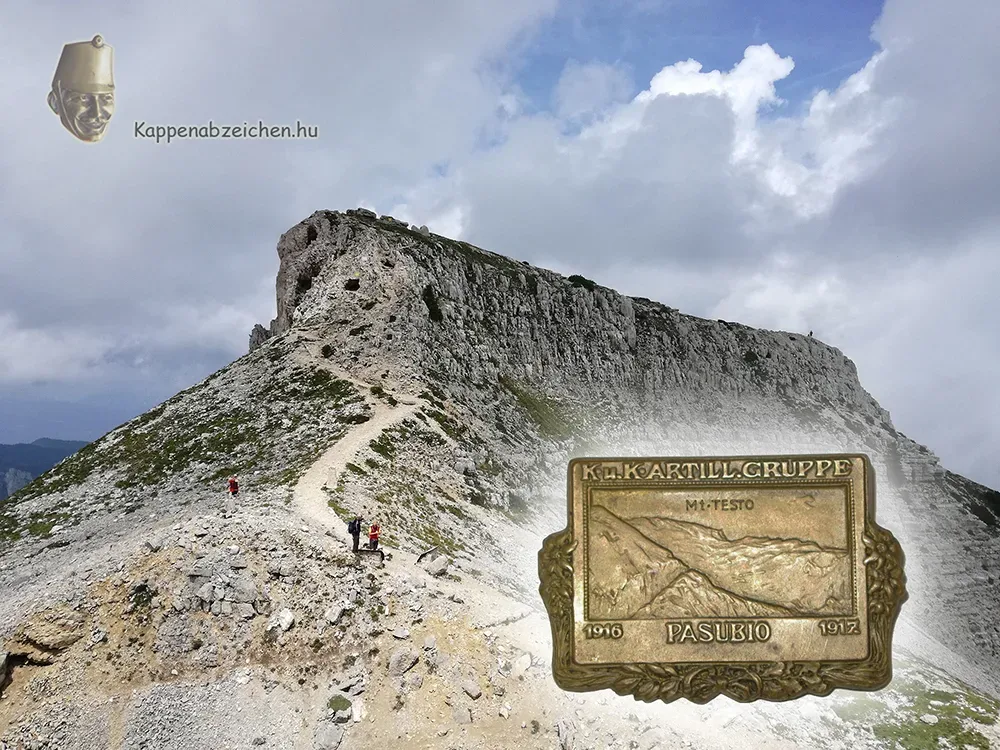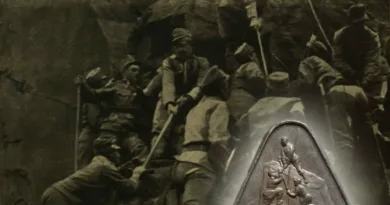Pasubio
Mountain warfare was particularly difficult, as the defenders had much more opportunities to attack the attackers with their weapons while overcoming the terrain obstacles, while the attacker could hardly harm the defenders. This has already been discussed in the history of the Col di Lana twin peak (here). Now a similar story, the siege and defense of Pasubio, is on the agenda. This is also a mountain range with twin peaks, where one of the two peaks connected to the flatter saddle was in Italian hands, and the other in Austro-Hungarian hands.
The question can rightly be asked, what was the rationale to besiege and occupy mountain peaks? This depended on the strategic location of the mountain. Pasubio dominated two valleys at the same time, in which it was located in the middle. The two valleys connected the Italian lowlands with the Etsch valley and the town of Rovereto located there. The mountain blocked an important transport and troop movement route for the Monarchy. Here, a major attack against the Italian opponent could have been launched. And for the Italians, possession of the mountain was obviously important for defense.

The occupation of the two peaks took place already in 1915, and desperate battles took place around the mountain in 1916 and 1917. The two peaks were turned into real fortresses by both sides, which could only be attacked from behind or through the saddle between the peaks. Attempts at this type of attack have repeatedly failed. In March 1918, the army of the Monarchy blew up the peak occupied by the Italians and crossed the saddle and occupied it. This action was already carried out as a preparation for the planned major offensive.

The preparation of the mine explosion was carried out by the 1/6th Komárom pioneer squadron. The threshing floor was created by mechanical harrowing, which of course involved a lot of noise. The Italians successfully prevented the carving of the route, which began at the end of 1917, on several occasions by drilling and detonating anti-mines. Several Hungarian pioneers died in the course of their work. Another difficulty was solving the oxygen supply for the workers in the more than 200-meter-long tunnel. This was sometimes done using oxygen containers. Finally, on March 13, perhaps only a few hours before the prepared Italian mine detonation, they managed to ignite their own ekrasite charge. Some 1,000 Italian soldiers were killed in the blast and the buried Italian tunnels on the mountain. Not long after, one side of the severely deformed and shaken mountain also broke off and buried the Italian accommodation and storage houses built on the mountainside under the peak. Another 200 Italian soldiers lost their lives here.

The insignia of Pasubio is the Kappenabzeichen of the artillery command stationed in the area. It could have been made before the blast in 1918, referring to the fierce battles of the previous period in the region. The contemporary photo attached to the post shows the Austro-Hungarian peak of the mountain, which has remained intact. The picture from the time of the World War shows the two peaks, the 100-meter-long saddle between them and the surrounding ridges. The drawing shows the cave system created by the two parties and marks the location of the mine explosion.




